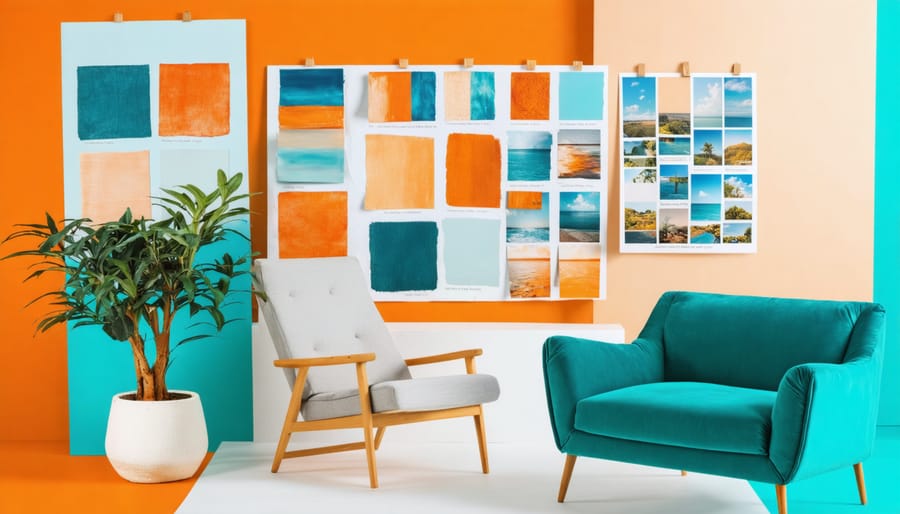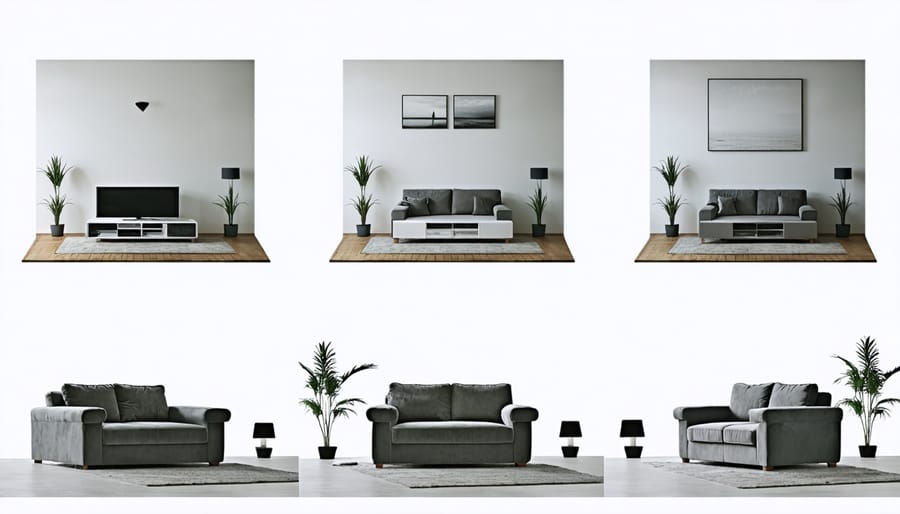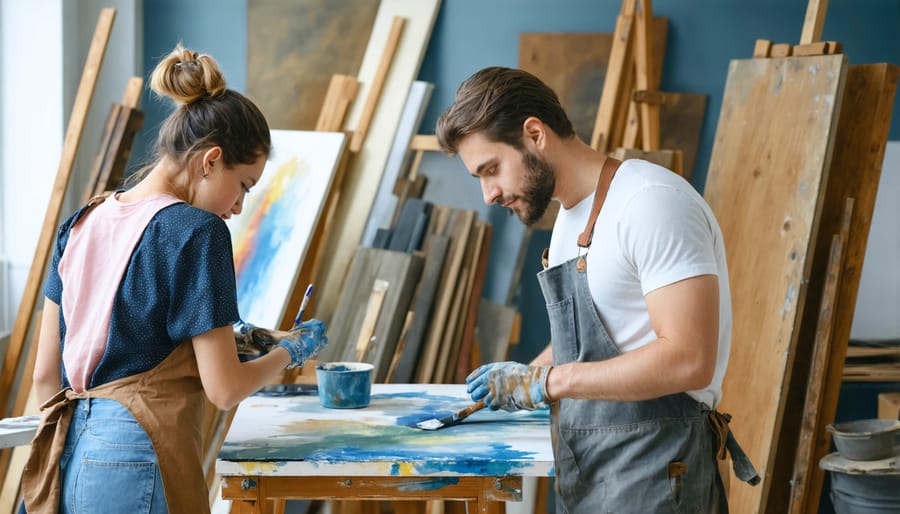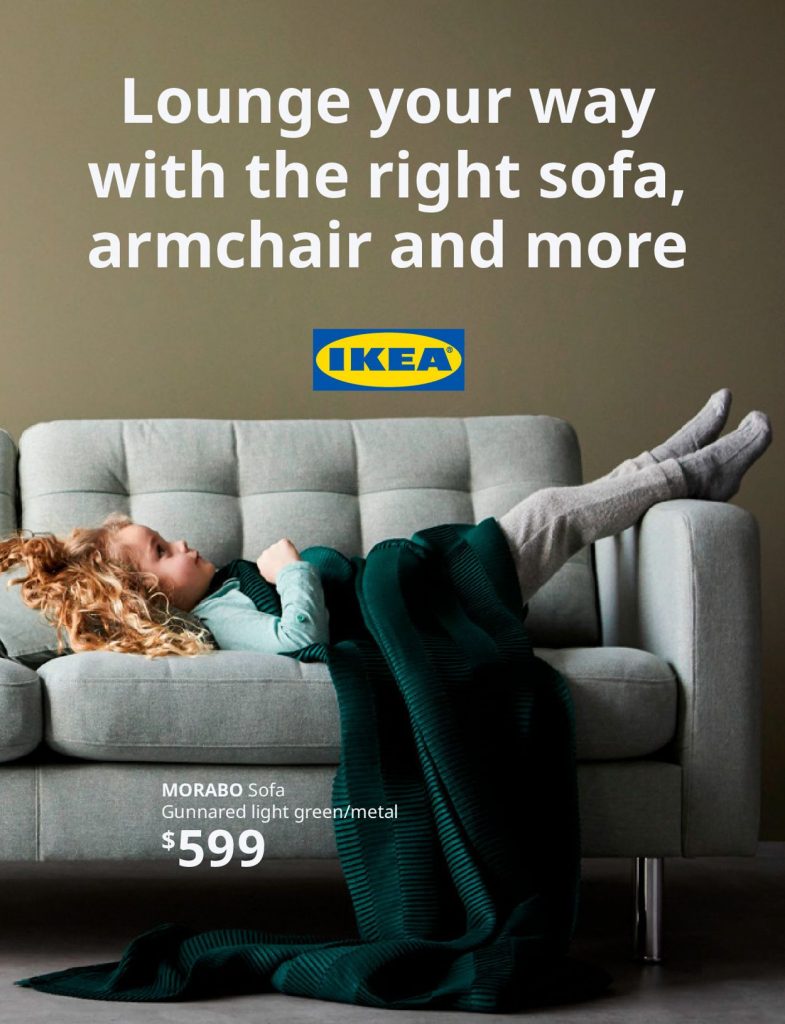
Transform Your Home Design Journey into an Exciting Adventure
Transform your living space into an engaging design playground with activities that make interior decorating both fun and approachable. Create mood boards using paint swatches, fabric samples, and magazine cutouts to visualize your dream space before committing to major changes. Experiment with furniture arrangements through free room-planning apps, allowing you to discover optimal layouts without breaking a sweat. Host design-swap parties where friends bring unused decor items to exchange, fostering creativity while refreshing spaces cost-effectively.
Interior design doesn’t have to feel overwhelming or expensive. These hands-on activities turn abstract concepts into tangible experiences, helping you develop your eye for design while making confident decisions about your space. Whether you’re a seasoned decorator or just starting your design journey, these interactive approaches transform routine home updates into creative adventures that build lasting skills and inspire unique solutions.
By breaking down complex design principles into manageable, enjoyable activities, you’ll naturally develop the confidence to tackle bigger projects while creating spaces that truly reflect your personality and lifestyle. Start small, stay playful, and watch as your design intuition grows through each hands-on experience.
Creative Color Play Sessions
Digital Color Visualization
Modern technology has revolutionized how we experiment with cohesive color schemes in our homes. With just a smartphone or tablet, you can instantly visualize different paint colors and combinations before making any permanent changes. Popular apps like Sherwin-Williams ColorSnap and Benjamin Moore Color Capture let you upload photos of your room and virtually paint the walls with thousands of colors.
These digital tools are perfect for testing bold color combinations you might be hesitant to try in real life. Simply snap a photo of your space, and watch as different shades transform the room on your screen. Many apps also suggest complementary colors and create custom palettes based on your preferences.
For a more immersive experience, try augmented reality (AR) apps that show colors in real-time as you move your device around the room. Some apps even let you save and share different color combinations with friends or your designer, making it easier to get feedback on your choices.
Remember to view your digital color experiments under different lighting conditions, as your device’s screen may not perfectly match how colors appear in real life. Use these tools as a starting point for inspiration rather than making final decisions based solely on digital views.
Mood Board Creation
Creating a mood board is like telling your design story before it comes to life. Start by gathering materials you’ll need: a large poster board or cork board, magazines, fabric swatches, paint chips, and photos that inspire you. Digital alternatives like Pinterest or Canva work great too, especially for storing and sharing your ideas.
Begin by selecting a central piece that captures your desired aesthetic – this could be a favorite paint color, a striking fabric pattern, or an inspiring photo. From there, build outward by adding complementary elements. Include texture samples, color schemes, furniture styles, and decorative accessories that resonate with your vision.
As you arrange your items, experiment with different layouts before committing to the final design. Group similar items together, creating mini-collections within your board. Don’t forget to include practical elements like flooring samples, window treatment ideas, and lighting fixtures.
For added organization, consider dividing your board into sections – perhaps one for each room or different aspects of your design (colors, materials, furniture). Take photos of your completed board to reference while shopping, and don’t be afraid to update it as your vision evolves.

Room Makeover Games
The 20-Minute Refresh Challenge
Ready to transform a room in just 20 minutes? This quick-refresh challenge is perfect for those moments when you need an instant boost in your space. Grab your timer and let’s make magic happen!
Start by clearing all flat surfaces – tables, shelves, and countertops. This instant decluttering creates an immediate sense of order. Next, spend five minutes rearranging your existing decor items, following the designer’s rule of three: group objects in odd numbers for visual interest.
For the next five minutes, focus on textiles. Flip or fluff your cushions, drape a throw blanket at an angle across your sofa, or switch your curtain ties for an instant style upgrade. If you have spare pillows in storage, swap them out for a fresh look.
Use your next five minutes to adjust your lighting. Move a table lamp to a dark corner, angle your floor lights differently, or simply clean your lampshades – it’s amazing how much brighter a room feels with dust-free fixtures.
In your final five minutes, add one unexpected element. Place a stack of books at an angle, create a mini vignette with favorite accessories, or bring in a plant from another room. The key is quick, decisive moves without overthinking.
This challenge works brilliantly for any room, from living spaces to home offices, and can be repeated whenever your space needs a quick pick-me-up. The best part? If you don’t love the changes, you’ve only invested 20 minutes!
Furniture Layout Adventures
Transform your space into a design playground by experimenting with different furniture arrangements. Start by creating a simple floor plan on graph paper or using a digital room planner app on your tablet. Measure your room and furniture pieces accurately, then cut out paper shapes to scale or use the digital versions to move pieces around effortlessly.
Turn this into an engaging activity by treating your room like a puzzle. Challenge yourself to create three distinctly different layouts using the same pieces. Consider traffic flow, conversation areas, and focal points as you experiment. Try unexpected angles, floating furniture away from walls, or creating multiple functional zones within one space.
Make it more interactive by inviting friends over for a “furniture shuffle party.” Have everyone contribute ideas and help move pieces around. This not only makes the process more enjoyable but also brings fresh perspectives to your space. Take photos of each arrangement to compare later, and live with your favorite layout for a few days before making final decisions.
For added fun, use masking tape to outline potential furniture positions on the floor before moving heavy pieces. This helps visualize the space and prevents unnecessary heavy lifting. Remember to consider both functionality and aesthetics – sometimes the most practical arrangement can also be the most visually appealing.

DIY Design Workshops
Upcycling Projects
Transform everyday items into stunning design pieces with creative upcycling projects that add personality to your space while being environmentally conscious. Start with simple furniture restoration projects like giving an old dresser new life with chalk paint and updated hardware, or reimagining wooden crates as stylish wall shelving.
Turn mason jars into elegant bathroom organizers with metallic spray paint and decorative knobs, or create unique pendant lights by removing the bottom of wine bottles and adding modern fixtures. Old ladder shelves can become striking plant displays or towel racks with minimal effort and a fresh coat of paint.
Get creative with fabric by transforming outdated curtains into elegant throw pillows, or use remnants to recover dining chair seats. Give new purpose to vintage suitcases by stacking them as a unique side table or converting them into hidden storage solutions.
Consider turning old doors into striking headboards, coffee tables, or even room dividers with some creative hardware and finishing techniques. Empty picture frames can become serving trays with the addition of decorative paper and handles, while vintage window frames make excellent photo displays or mirror installations.
Remember to maintain a cohesive look by choosing a consistent color scheme or style theme across your upcycled pieces. This ensures your creative projects enhance your space rather than appearing cluttered or mismatched.
Custom Art Creation
Creating your own artwork is one of the most rewarding ways to personalize your space while expressing your creativity. Start with simple projects like abstract canvas paintings using your room’s color palette. Mix acrylic paints to match your existing decor, and don’t worry about perfection – organic shapes and textures often create the most interesting pieces.
Try creating textural wall art using materials you already have. Woven yarn art, fabric collages, or even framed collections of natural elements like pressed leaves can add unique dimension to your walls. For a modern touch, experiment with geometric designs using painter’s tape as guides, or create striking monochromatic pieces using different shades of your favorite color.
Photography enthusiasts can capture architectural details or nature scenes that complement their interior theme. Print these in black and white or sepia tones for a timeless look, or go bold with oversized colorful prints that become focal points.
Don’t overlook three-dimensional art. Sculpt with air-dry clay, create paper installations, or design hanging mobiles that add movement to your space. Repurpose old items into artistic displays – vintage maps become striking wall art, while collected trinkets can be arranged in shadow boxes for personalized storytelling through decor.
Remember to consider scale and placement. Small pieces work well in gallery walls, while larger statements can anchor a room. Group similar pieces together for impact, and don’t be afraid to rotate your creations seasonally to keep your space fresh and evolving.
Social Design Activities
Design Party Ideas
Transform your interior design journey into a social experience by hosting engaging design-focused gatherings. Consider organizing a mood board party where guests bring magazine clippings, fabric swatches, and paint chips to create vision boards for their spaces. Set up different stations with materials and refreshments to keep the creative energy flowing.
Host a furniture arrangement challenge where teams compete to create the most functional and aesthetically pleasing room layout using existing pieces. This activity not only generates fresh ideas but also teaches practical space-planning skills. For added fun, use masking tape to outline different furniture arrangements on the floor before moving pieces.
Consider organizing a DIY decor workshop where participants can create designer-quality DIY projects together. From custom artwork to personalized throw pillows, these gatherings combine creativity with skill-building in a supportive environment.
Paint and sip parties with an interior design twist are another excellent option. Instead of traditional canvas painting, focus on creating small-scale room renderings or color schemes while enjoying refreshments. This relaxed atmosphere helps demystify the design process and builds confidence in color selection.
Don’t forget virtual design parties for long-distance friends. Use video calls to share room tours, offer design suggestions, and even shop online together for home decor. These digital gatherings can be just as engaging as in-person events while accommodating various schedules and locations.

Family Design Challenges
Transform interior design into a family bonding experience with these engaging challenges that everyone can enjoy. Create a “Design Detective” game where family members photograph their favorite elements in each room, then share and discuss why they love these features. This sparks conversation about personal style preferences and helps build a collective vision for your space.
Try the “Room Swap Challenge” where family members switch rooms for an hour and suggest three improvements they’d make. This fresh perspective often reveals overlooked opportunities and teaches children to think critically about space utilization.
Get creative with the “Mood Board Marathon” – give each family member 30 minutes to create a mood board for a shared space using old magazines, fabric swatches, and paint chips. Vote on the best ideas and incorporate winning elements into your final design.
For younger children, introduce the “Color Story Adventure” where they pick a color scheme for their room by collecting items from around the house. This teaches color coordination while making the design process playful and accessible.
Make sustainability fun with the “Upcycle Olympics” – challenge family members to reimagine old furniture or decor items. Award points for creativity, practicality, and eco-friendliness. This activity teaches valuable lessons about sustainable design while fostering innovation and problem-solving skills.
Remember to document these activities with photos – they’ll become cherished memories of your family’s design journey together.
Interior design activities transform what could be overwhelming home improvement projects into enjoyable, creative experiences that bring your living spaces to life. By breaking down design tasks into manageable, fun activities, you’ve discovered how to approach home decoration with confidence and enthusiasm. Whether you’re creating mood boards, experimenting with color schemes, or hosting design parties with friends, these activities make the design process more approachable and less daunting.
Remember that interior design isn’t just about following rules or trends – it’s about expressing your personality and creating spaces that make you feel at home. Through these activities, you’ve learned to trust your instincts while developing practical skills that will serve you well in future projects. The hands-on experience gained from these exercises helps build confidence in making design decisions and understanding how different elements work together.
The social aspects of many of these activities also add an extra layer of enjoyment to the design process. Sharing ideas, getting feedback, and collaborating with others not only makes the experience more fun but often leads to better results and fresh perspectives you might not have considered on your own.
As you continue your interior design journey, keep experimenting with these activities and don’t be afraid to adapt them to suit your needs. The skills and confidence you’ve developed will help you tackle future design projects with creativity and enthusiasm, turning your house into a personalized haven that truly reflects your style and personality.
